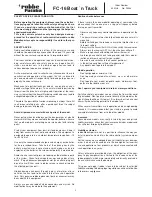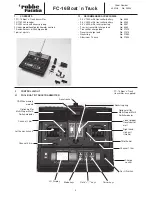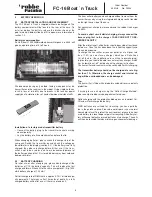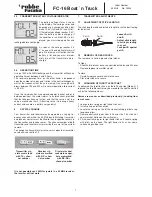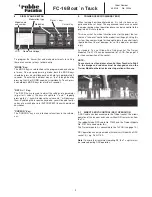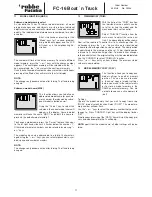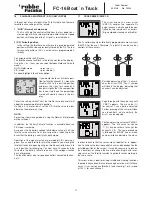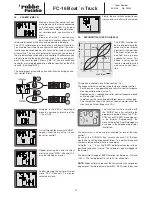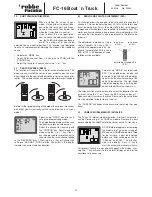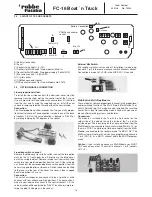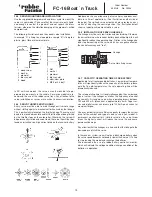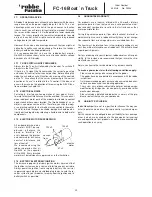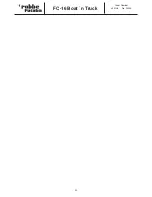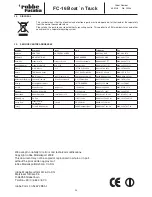
Order Number
40 MHz No. F4044
FC-16 Boat `n Truck
9
Mode Key
Model name
and number
Data +/- keys
LCD
Cursor Key
Operating Voltage
Modulation type
8.
DISPLAY AND KEYPAD
9.
TRAINER OPERATION(BUDDY BOX)
When learning how to control models, it is safer to have an ex-
perienced driver at hand. The experienced teacher can control
the model during critical operation phases and give control to the
pupil when it is safe to do so.
This means that if a critical situation arises for the pupil, the tea-
cher can “take-over” control of the model from the pupil. Using this
system, it becomes simple for the pupil to learn the control inputs
required without fear of damage, loss of the model or personal
injury.
As standard, Tx is not fitted with a Trainer socket. The Trainer
Module 4 No. F1374 can be connected to Tx PCB. See page 16
for the exact position of the socket.
NOTE:
To ensure correct hand-over of control from Teacher to Pupil
Tx, the orange and red wires must be changed over on the
Trainer Module, otherwise incorrect operation will ensue.
9.1 DIRECT SERVO CONTROL (DSC) OPERATION
A DSC cable can be connected to the Trainer socket; this allows
operation of the receiver and servos without RF transmission from
the Tx.
The robbe/Futaba DSC cable No. F1422 and the Trainer Module
No. F1574 are needed for this.
The Trainer module 4 is connected to the Tx PCB (see page 16).
DSC operation can only be made with receivers fitted with a DSC
socket (C), e.g. Rx R-118F.
Note:
To avoid the transmitter radiating RF, the Tx crystal must
be removed during DSC operation.
To program the transmitter and make adjustments to setting,
there are a number of keys for data entry.
“MODE” Key:
The MODE key is used to choose the program mode and choice
of menu. To enter programming mode, both the MODE keys
should be pressed simultaneously and held for approximately 2
seconds. To enter the individual menus, “leaf” through them by
pressing the UP or DOWN arrow keys individually. To exit, press
and hold both MODE keys for a further 2 seconds.
“DATA +/-“ Key:
The “DATA” keys are used to adjust the settings of a parameter
(e.g. alter % values). The keys are split into “+” and “-“, logically
pressing the “+” key will increase the values and “-“ will decrease
them. By holding the respective key down, you will be able to alter
values at a much higher rate (AUTOREPEAT) than with individual
keystrokes.
“CURSOR” Key:
The “CURSOR” key is used to choose functions in the sub-me-
nus.



